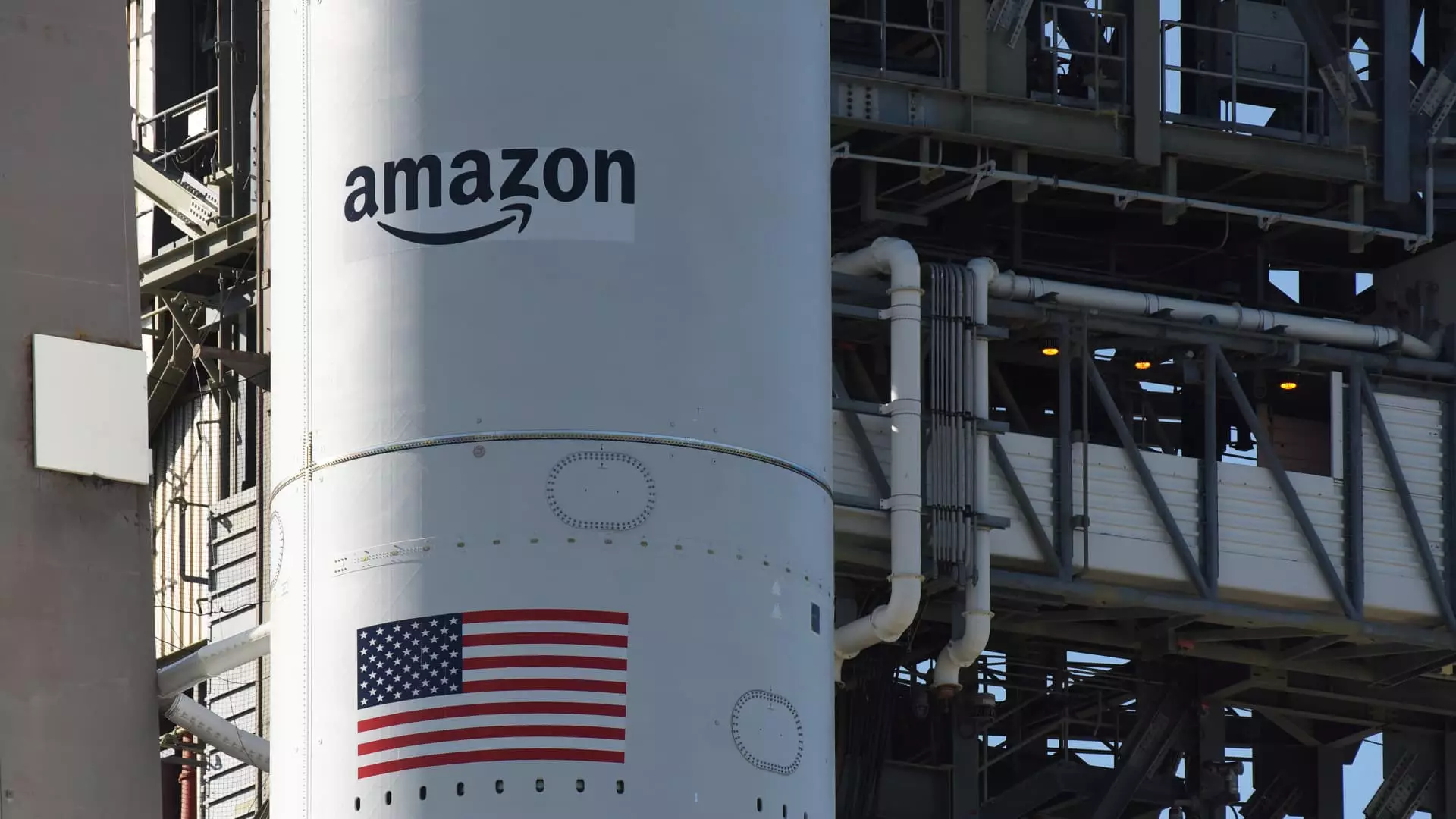Amazon’s ambitious plan to launch its Kuiper internet satellites hit a snag recently, as poor weather conditions thwarted the company’s carefully laid launch schedule. Originally intended for a liftoff from Cape Canaveral, Florida, the mission faced delays due to formidable obstacles in the form of “stubborn cumulus clouds” and powerful winds. This setback underscores an essential reality of space exploration: nature’s whims are often more formidable than human ingenuity. It’s a stark reminder that despite Amazon’s extensive resources and meticulous planning, the elements can easily commandeer the narrative.
The Race Against Time
While the postponement is disappointing, it also amplifies the urgency behind Amazon’s efforts. With substantial ambitions in the burgeoning satellite internet market, the company is well aware that its competitor, SpaceX’s Starlink, has already secured a significant foothold with over 8,000 satellites operational. The tech giant has established itself as a formidable leader, and Amazon must accelerate its pace to gain any semblance of a competitive edge. The stakes are high, with the Federal Communications Commission (FCC) imposing a deadline that necessitates the deployment of at least half of the planned U.S. constellation—approximately 1,618 satellites—by July 2026.
Strategic Planning and Future Intentions
Amazon’s aspirations extend beyond merely launching satellites; the goal is to establish a reliable, high-speed internet service for consumers, businesses, and government entities alike. The company envisions an ecosystem facilitated by square-shaped terminals that will provide swift, low-latency internet access across diverse landscapes. This vision is ambitious, and its execution hinges on effective coordination and robust project management. Following this postponement, it’s crucial for Amazon to streamline its operational strategies to ensure timely results instead of facing repetitive hurdles.
The Bigger Picture in Satellite Technology
The development of satellite internet services isn’t merely about competition between industry giants; it embodies a transformative shift in how we perceive connectivity. As the digital divide continues to be a pressing issue, Amazon’s Kuiper project holds the potential to enhance internet access in underserved areas. Thus, while the delay might be seen as a setback, it simultaneously emphasizes the vital societal role that satellite internet can play.
Anticipating the Next Steps
Looking ahead, Amazon has indicated plans to utilize the same launch partner, United Launch Alliance, for its next mission and has begun preparations for subsequent satellite deployments. It is imperative that the company not only meets the FCC’s deadlines but also focuses on refining the technology to ensure it can deliver on its promises of speed and reliability. The satellite sector is rapidly evolving, and any hesitation may result in lost opportunities.
As Amazon forges forward with its Kuiper initiative, it faces numerous challenges ahead but also the possibility of revolutionizing global internet access. Such endeavors invariably demand resilience, innovation, and strategic foresight—qualities that are essential for overcoming both environmental hurdles and competitive pressures in an ever-changing technological landscape.


Leave a Reply